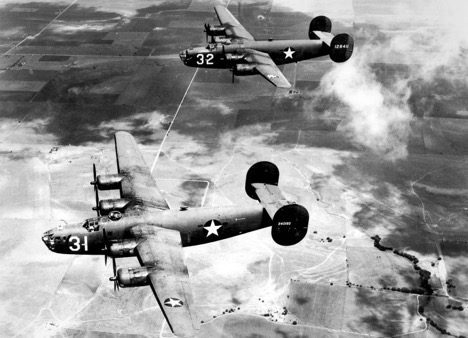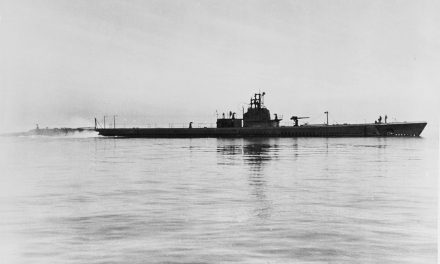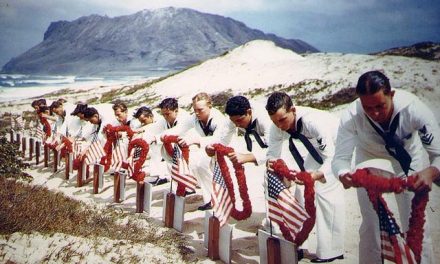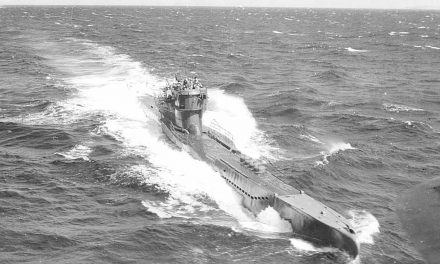American B-24 Liberators out of North Africa lit up the Italian harbor of Naples with 100,000 pounds of explosives yesterday.
After struggling for months to gain ground on the Axis powers in Northern Africa, the Allies recently began to push Nazi General Erwin Rommel’s forces back toward the Mediterranean. The advances have progressed far enough to allow the Allies’ to begin to shift the focus from North Africa to Italy, with the British R.A.F. pummeling the industrial areas of northwestern Italy, and leaving the southwest harbor of Naples to the Americans.
Dozens of warships dotted the surface near the Angionio Mole, which sits near the entrance to the harbor, as the bombers’ engines began to roar over the harbor, eager to drop their payload. Heavy, but inaccurate anti-aircraft fire began to rise up from the ground beneath as the bomb bays opened beneath the Liberators.
One by one each bomb left the undercarriage of the aircrafts, with one striking a direct hit on an Italian cruiser, sending it to the seafloor of the harbor, according to the official Army statement. Two other bombs each found a battleship and another cruiser leaving them badly damaged with white and black plumes of smoke rising from their decks.

American B-24 Liberators in flight. Photo: Air Force Image Gallery.
According to the official statement from the U.S. Army, “numerous hits were observed among ships moored at Porta Dimassa quay and other hits on the Angionio mole caused fires and great clouds of smoke. A large ship moored at the northeast side of the mole received a direct hit.”
That large ship is believed to be the Italian cruiser that suffered a direct hit.
Coming in just over the tops of the mountains surrounding the city with Mount Vesuvius as a backdrop, the American Liberators successfully avoided detection and thus left the Italian ammunition and supply dumps and railways scattered throughout the harbor, along with the dozens of other ships that were damaged during the bombing run by the B-24s.
The first major raid by American forces on the mainland of Italy left behind damage that may help kick-start the Allied advances through Italy. In addition to damage to the harbor, the railways that aid in the movement of Axis war materials were hit as well, cutting off part of the Nazi chain of supply.
Nights before the American raid, the British showered the cities in northwestern Italy with ordinance from above that left them in ruins. The raid is said to have crippled around three-tenths of the Italian war industries, according to a high official of the British Air Ministry. The official also stated that there were only about ten cities, all in northern Italy, where manufacturing and other key military targets are located.
While the Brits are focused on the north, the largely untested American Army Air Force delivered its first significant blow to the Axis with the targeting of the major Italian harbor.
The American raid on the city can be counted as a success for multiple reasons. Not only did it cripple a key Italian harbor, the nearest point of relief to Rommel’s army in North Africa, it also serves as a confidence boost for the men taking to the skies over Africa and Europe. Every one of the U.S. planes that took off from their base in the Middle East returned safely, and not a single one of the Italian aircraft that made it off the ground in an attempt to greet the Americans succeed in reaching the bombers.
With the British advancing from the north, and the American Army Air Force pummeling the southern coast, the Allies are inching closer to having the ability to launch an invasion of Italy.
Sources:
“DAY RAID SINKS CRUISER AT NAPLES: HITS ON 2 OTHER WARSHIPS SYRACUSE SEAPLANE BASE BOMBED.” The Observer. Dec. 6 1942. Pg. 1.
Gorrell, Henry T. “Yanks Dumped 100,000 Pounds of Bombs on City.” The Washington Post. Dec. 7, 1942. Pg. 2.
MacDonald, James. “BIG R.A.F. DAMAGE IN ITALY ESTIMATED.” The New York Times. Dec. 3, 1942. Pg. 5.
“NAPLES RAID: ITALIAN NAVAL LOSSES.” The Manchester Guardian. Dec. 7, 1942. Pg. 5.
Parr, Grant. “U.S. Bombers Blast Naples, Sink Cruiser, Hit a Battleship.” The New York Times. Dec. 6 1942. Pg. 1.






Any info about allied supply train disappearing on the way to the front in Naples, italy in WWII………………